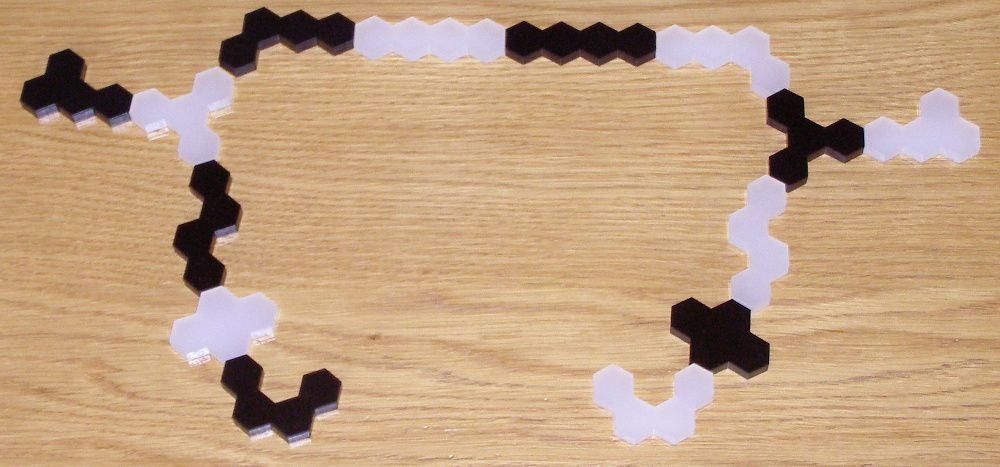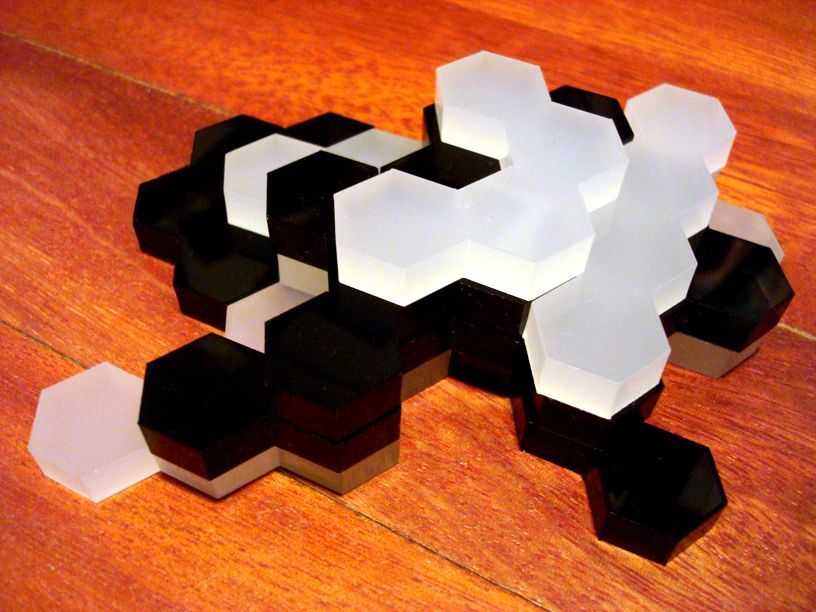Hey folks! Welcome to my review of the board game Seven. Grab your gaming pals, because we’re about to break down one of the best games in the market today. From its strategic gameplay mechanics to the nail-biting player interactions, Seven has a lot to offer. We’ll also take a closer look at the component quality and discuss how much you’ll enjoy playing this game over and over again. Let’s jump right in and see if this game is worth your time and bucks!
How It Plays
Setting Up
First things first. You lay out the game board and shuffle the deck of cards. Then, each player picks a color and grabs the corresponding set of pieces. Place the starting tokens on the designated spots on the game board.
Gameplay
Players take turns drawing cards, moving pieces, and making strategic decisions. The goal is to complete sets of seven in various categories. The twist? You can block or aid other players, making each turn a blend of strategy and sabotage. Watch out for those special action cards that can change the game in an instant!
Winning the Game
The first player to successfully complete sets of seven in three different categories wins. It’s not just about speed; it’s about outsmarting your opponents. You’ll need a mix of clever tactics and a bit of luck to clinch victory.
Want to know more? Read our extensive strategy guide for SEVEN.
Gameplay Mechanics in Seven: Worth the Buzz?
Alright folks, let’s talk about the nitty-gritty of Seven. This game’s mechanics make it stand out in a crowded market. The basic premise is simple, yet it hides layers of strategy like an onion. And trust me, you will cry if you don’t plan your moves right.
In Seven, you get seven cards each round. Seems reasonable, right? Well, here’s where it gets tricky. Each card has dual roles – they can either be played for points or used to sabotage your opponents. The choice is yours, but choose wisely, or your game might unravel faster than a cheap sweater.
The game employs a clever balancing act of offensive and defensive plays. One minute, you’re building up a formidable hand, and the next, you’re on the backfoot because someone decided to rain on your parade with a well-timed card. Talk about a rollercoaster ride! Plus, the mechanics encourage a lot of bluffing. Ever tried keeping a poker face while your friend is giving you the stink eye? Yeah, it’s tough.
Another cool mechanic is the ‘lucky seven’ rule. If you draw a seven, you get a bonus move. Sounds fun, but it’s not always a blessing. Sometimes, it can put a target on your back, making you the enemy of everyone else at the table. It’s like winning a golden ticket but finding out the chocolate factory is full of traps. Fun, but stressful!
Stay tuned, because next we’re diving into how Seven fosters player interaction and why you might need a thick skin to play this one.

How Player Interaction Shapes Your Experience in Seven
Picture this: You’re sitting around a table with your friends, playing Seven, and everyone is laser-focused on their next move. You can feel the tension. Why? Because player interaction in Seven is intense! Every decision you make can directly mess with your buddies’ plans, and that’s where the beauty of it lies.
In Seven, you’ll find yourself making alliances, breaking them, and sometimes even throwing a wrench in someone’s strategy just because you can. It’s like social chess mixed with a bit of trickery. You can’t win by just focusing on your own game; you need to keep an eye on everyone else too. The game encourages you to read your opponents, anticipate their moves, and sometimes, just sometimes, deceive them.
One memorable session, my friend Sam thought he had the game in the bag, grinning from ear to ear. But with a perfectly timed card, I turned his winning streak into a spiral of despair. The table erupted in laughter. Sam’s face? Priceless. The highs and lows make Seven thrilling and emotionally charged.
Now, don’t get me wrong. Someone might sulk for a minute or two if you’ve just destroyed their whole plan. But that’s part of the fun. You laugh, you cry, and you learn to sharpen your strategies for the next round. You build camaraderie and, yes, a little bit of friendly rivalry.
Get ready to be wowed, because next up, we’ll dive into Seven’s component quality. Trust me, you won’t want to miss this!
Component Quality of Seven: Fit for Fun and Function
Let’s talk about the bits and pieces that make up Seven. First off, the box feels sturdy. Strong enough to survive my notorious game-night mishaps (hello, coffee spill!). The game board itself? Smooth and durable. It’s made well and it doesn’t bend or warp, which is always a plus when your pals get a bit too enthusiastic with their game pieces.
The cards in Seven stand out because they’re not your average flimsy paper. These babies can take a shuffle beating and a bit of rough handling. My dog even got hold of one, and it survived! That’s saying something. The artwork is crisp and colorful, bringing the game to life without being overly flashy.
The game tokens are another story. They have a nice weight to them and don’t feel cheap. During our first playthrough, Bob (the butterfingers) dropped them multiple times, but they held up like champs. No chips or scratches in sight. The dice are also well-made and balanced, which is key for folks who, unlike me, believe in dice juju.
The rulebook is clear and concise. No need for squinting at tiny fonts or deciphering confusing rules. It’s laid out in a way that even my friend Tim, who usually struggles with instructions, caught on quickly.
In a nutshell, the components of Seven bring quality to the table and ensure many enjoyable game nights. Now, let’s see how often you’ll want to bring Seven out for a rematch in our next section on Replayability.
Replayability of Seven: Endless Fun or One-Hit Wonder?
Let’s talk about replayability, folks. This is the bread and butter of any good board game. Seven, with its layers of strategy, shines bright in this department. Each game feels like a fresh challenge because of the countless strategies you can employ. Trust me, I’ve tried them all and still get surprised.
The game offers plenty of variability. Each time you play, the combination of elements and the dynamic nature of player decisions create a new experience. Seven has an incredible knack for keeping players on their toes. I recall a game night where we played it four times in a row! We all felt like we were just scratching the surface of what Seven had to offer.
And here’s the kicker: even losing in Seven feels fun. The game keeps you engaged, whether you’re plotting your next big move or watching others mess up their grand plans. After each round, we couldn’t help but plan our next game, discussing what worked and what didn’t. The friendly banter and rivalry made me want to play more and see if I could outwit my buddies. It’s like trying a new recipe each time – sure, you have the same ingredients, but the outcome can be wildly different.
So, do I recommend Seven? Absolutely. Its replayability ensures that it never gathers dust on your game shelf. It’s worth every penny, and you’ll find yourself coming back for more, time and time again.
Conclusion
Wrapping up my review of Seven, I can confidently say this game offers a great mix of strategy and player interaction. The mechanics are engaging, and the game components are top quality. While luck plays a role, it doesn’t overshadow skill, making it feel fair. Plus, the replayability is high, ensuring you’ll get plenty of bang for your buck. If you’re looking for a game that will spark laughter and rivalry among friends, Seven is definitely worth your time. Don’t miss out on this gem. Happy gaming!


